#Saxifragales
Text

Ozark Witch-Hazel
Hamamelis vernalis

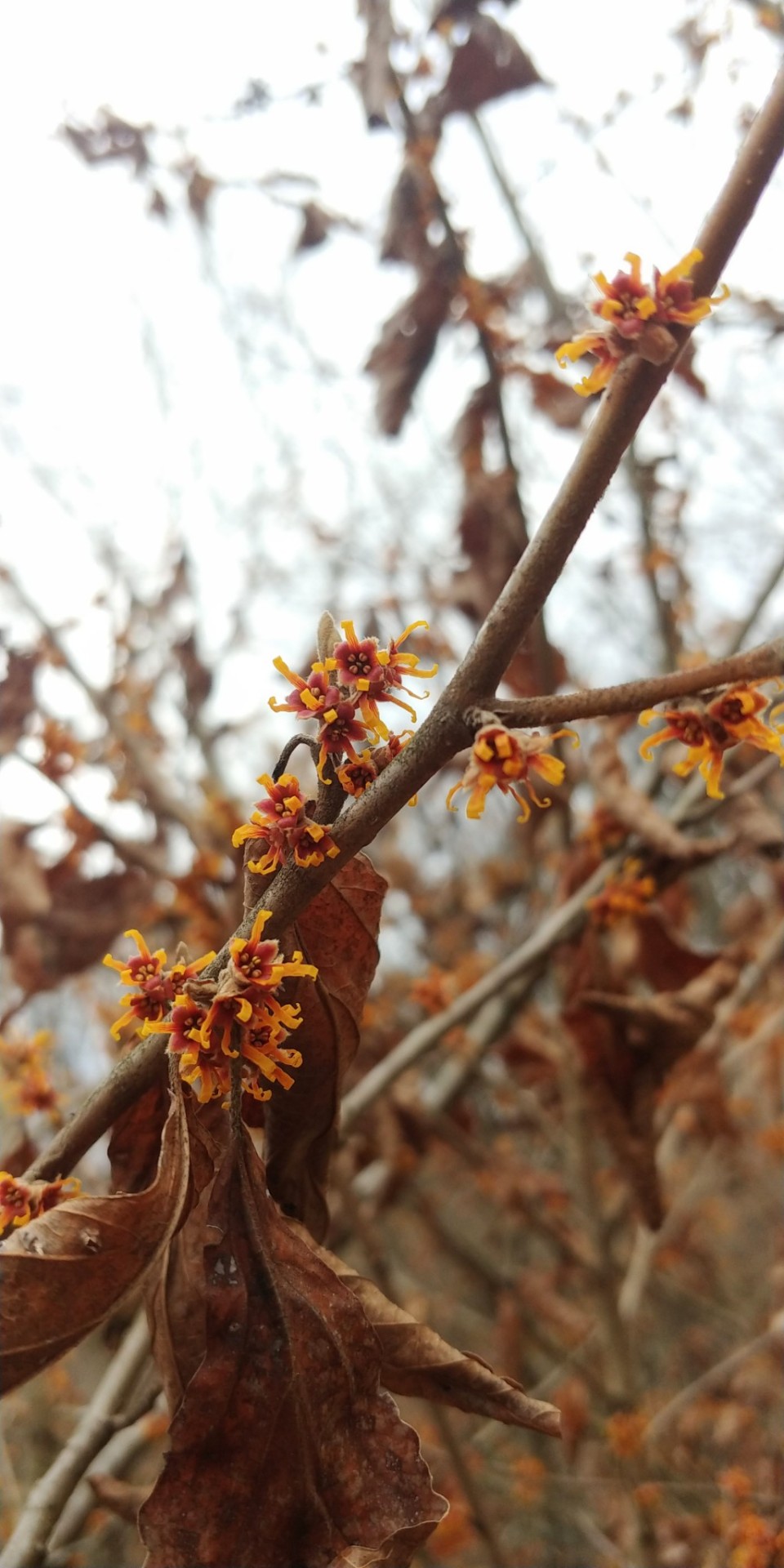
This species of witch-hazel requires a winter freeze to bloom and is endemic to the Ozarks in Missouri, Arkansas, and parts of eastern Oklahoma.
Feb. 6th, 2023
Augusta, St. Charles County, Missouri, USA
Olivia R. Myers
@oliviarosaline
#botany#Hamamelis vernalis#hammamelis#saxifragales#Hamamelidaceae#eudicots#missouri#witch hazel#witch hazels#witch-hazel#plants#flowers#nature#the ozarks#ozarks#nature photography#flower photography#spring flowers#winter flowers#forestcore#naturecore#forest#woods#forests#Missouri nature#plants of the ozarks#plants of Missouri#unique flowers#native plants#wildflowers
27 notes
·
View notes
Text

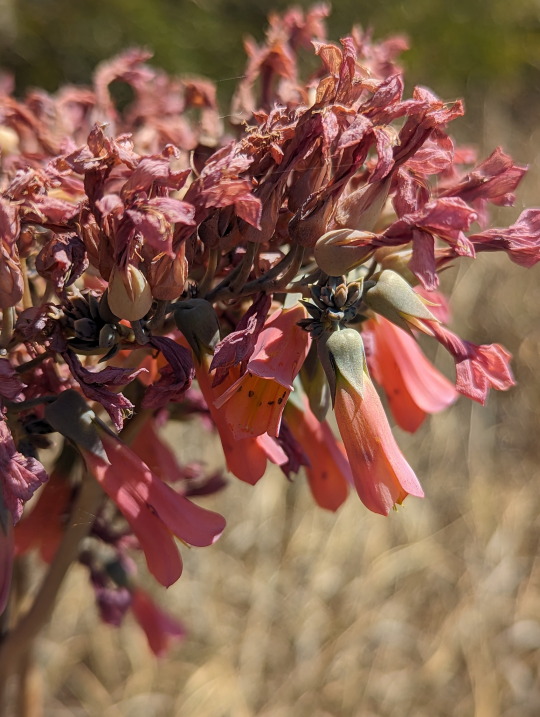

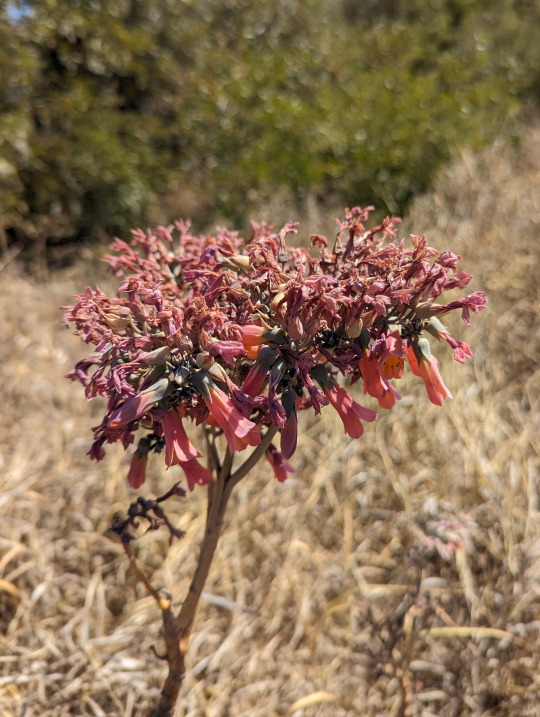


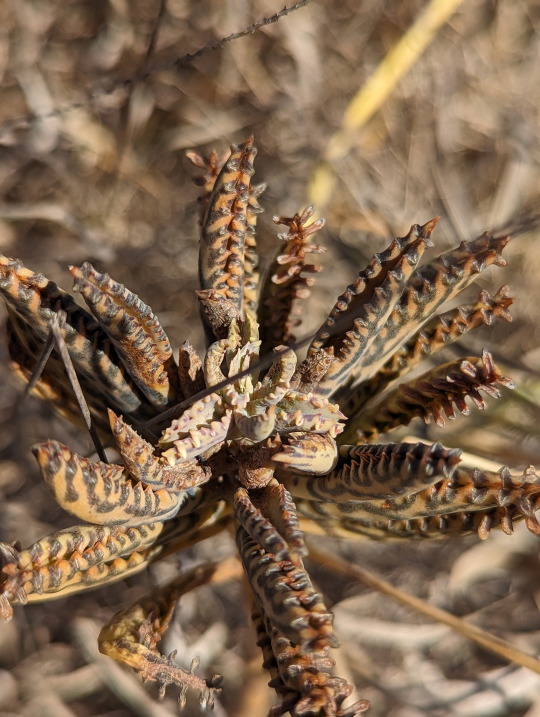

(Hybrid) Alligator plant.
A hybrid of Kalanchoe daigremontiana and Kalanchoe delagoensis. This stuff was making ground along a large stretch of this road. Considering its a hybrid from Mother-of-Millions, I can't imagine that being a good thing.
Damn there's a lot of weeds in this area.
16/09/23 - Saxifragales: Kalanchoe × houghtonii, outback road
#Kalanchoe × houghtonii#Kalanchoe#Kalanchoes#Saxifragales#Magnoliopsida#Dicots#Angiospermae#Flowering Plants#Tracheophyta#Vascular Plants#Plantae#plants#botany#angiosperms
9 notes
·
View notes
Text

Sedum oreganum (Crassulaceae)
Oregon stonecrop
My friend took me on a botanical tour of the island in the lagoon and we saw at least 3 species of Sedum!
Cortes Island | June 14, 2022
#botany#plants#Sedum#Sedum oreganum#Crassulaceae#Saxifragales#succulents#stonecrop#Oregon stonecrop#BC#flora of BC#photo thursday
42 notes
·
View notes
Text

Crassula sp.
04-JAN-2023
Melbourne, Vic
#australia#victoria#melbourne#flowers#white#white flowers#succulents#saxifragales#crassulaceae#crassuloideae#crassula
2 notes
·
View notes
Text

2/9/23
#chinese fringe flower#Loropetalum chinense#eucidots#Saxifragales#Hamamelidaceae#plant#flowering plant
0 notes
Photo

Kalanchoe daigremontiana, llamada vulgarmente aranto o espinazo del Diablo, es una planta suculenta en la familia Crassulaceae, endémica de Madagascar. #Aranto #EspinazoDelDiablo #KalanchoeDaigremontiana #KDaigremontiana #Raym #Hamet&HPerrier1914 #Kalanchoe #Magnoliopsida #Crassulaceae #Saxifragales #Suculenta (en Mendoza, Argentina) https://www.instagram.com/p/CkL__JGJvx_/?igshid=NGJjMDIxMWI=
#aranto#espinazodeldiablo#kalanchoedaigremontiana#kdaigremontiana#raym#hamet#kalanchoe#magnoliopsida#crassulaceae#saxifragales#suculenta
0 notes
Photo

#lichtundschatten #plauenvogtland #900jahreplauen #sonnenuntergang🌅 #fädigepalmlilie #yuccarecurvifolia #agavoideae #asparagales und #astilbejaponica #saxifragales (at Plauen) https://www.instagram.com/p/CfjIKVPtHTC/?igshid=NGJjMDIxMWI=
#lichtundschatten#plauenvogtland#900jahreplauen#sonnenuntergang🌅#fädigepalmlilie#yuccarecurvifolia#agavoideae#asparagales#astilbejaponica#saxifragales
0 notes
Text
A peak inside the Eudicots:
The largest group of flowering plants
Two of the largest groups within Eudicots are the Rosids and the Asterids, named after two of their more famous families (the rose family and the aster or sunflower family.)
The Asterids include: Ericales (an eclectic order that includes tea, kiwi fruit, and shea nuts), Lamiids (that's not a typo -- includes olives, coffee, the mint family, and the nightshade family), and Campanulids (includes the sunflower family, the carrot family, dandelions, and artichokes.)
The two main groups within the Rosids are the Malvids and the Fabids. (Plus the order that includes grapes, Vitales.)
Fabids include melons, squashes, beans and peas, the rose family (which contains apples, strawberries, cherries, and almonds), and oaks. And weed.
Malvids include cacao (chocolate!), sugar maples (maple syrup), citrus fruits, poison ivy, cotton, wasabi, cabbage, and many more.
But that's not all, there's also the basal Eudicots (poppies, the lotus flower), and some core Eudicots that aren't Asterids or Rosids, like Saxifragales (peonies, gooseberries, currants), Santales (sandalwood, mistletoe), and Caryophyllaes (cacti, Venus fly traps, carnations, buckwheat, ice plant, and tumbleweed.)
By the way, if it ends in -ales? You'll see it in the Order round. If it ends in -ids? Those are all clades that do not conform to the traditional kingdom-phylum-etc system. I think they're very cool to learn about so I wanted to mention them here! But they're not catagories that are part of the tournament, we're skipping past a ton of ways of dividing plants between Class and Order.
29 notes
·
View notes
Photo

雪の下[Yukinoshita]
Saxifraga stolonifera
雪[Yuki] : Snow
の[No] : Of
下[Shita] : Under, bottom
The origin of the name is not clear. They say it is because the leaves keep green even under snow, or because the large petals growing on the underside look like a 舌[Shita](tongue) as white as snow, and so on.
The Saxifragales order is called ユキノシタ目[Yukinoshita-moku]. Until the plant classification was changed to the Angiosperm Phylogeny Group system, 紫陽花[Ajisai](Hydrangea,) 空木[Utsugi](Deutzia,) etc. were in ユキノシタ科[Yukinoshita-ka](the Saxifragaceae family.)
11 notes
·
View notes
Video
Las crasuláceas
Crassulaceae, las crasuláceas, forman una gran familia de plantas del orden Saxifragales. Generalmente son plantas herbáceas, algunas subarbustivas y relativamente pocas arbóreas o acuáticas. Están extendidas mundialmente, pero mayoritariamente en el hemisferio norte y África meridional. Estas plantas almacenan agua en sus hojas suculentas, ya que su hábitat lo conforman típicamente zonas secas y calurosas, donde el agua es escasa. Existen alrededor de 1400 especies aceptadas en 35 géneros. Hojas simples de disposición varia, alternas, opuestas o en roseta basal, sin estípulas. Flores hermafroditas, regulares; perianto diclamídeo, con frecuencia pentámero, a veces tetramero, hexamero y raramente multimero, cáliz a veces más o menos soldado en la base; androceo isostémono o diplostémono, soldado al tubo de la corola; gineceo súpero con varios carpelos libres o soldados en la base. Inflorescencias a menudo cimosas. Frutos capsulares o foliculares. Tienen un metabolismo particular, por lo que a veces se les llama plantas CAM, que consiste en que la fotosíntesis se realiza en dos fases separadas, una fotótrofa (lumínica) durante el día y la sintética (oscura) durante la noche. El nombre de fotosíntesis CAM (por las siglas en inglés de metabolismo ácido de las crasuláceas) se dio tras descubrir por primera vez este tipo de fotosíntesis en ellas. Muchas de las especies de esta familia son populares en jardinería y floricultura; son plantas duras, de aspecto extraño muchas de ellas y requieren cuidados mínimos. Otra ventaja para el cultivo de estas plantas es lo habitualmente sencillo de su propagación, necesitándose en algunos casos una simple hoja para lograr un nuevo ejemplar. La clasificación es difícil debido a su facilidad de hibridación, tanto silvestres como en cultivo. Antiguamente se las incluía en el orden de las rosales, pero en la actualidad han sido clasificadas en el orden Saxifragales
0 notes
Link
Autor: Olga Guedes
0 notes
Text

Ozark Witch-Hazel
Hamamelis vernalis


This fragrant species of witch-hazel requires a winter freeze to bloom and is endemic to the Ozarks in Missouri, Arkansas, and parts of eastern Oklahoma.
Feb. 14th, 2024
St. Louis County, Missouri, USA
Olivia R. Myers
@oliviarosaline
#nature#woods#forest#witch hazel#witch-hazel#hamamelis#hamamelis vernalis#ozark witch hazel#ozark witch-hazel#the ozarks#plants of the ozarks#Missouri#ozarks#winter flowers#winter#plants#flowers#blooms#winter blooms#witch hazel flowers#botany#Missouri nature#naturecore#forestcore#nature core#forests#wild flowers#native plants#spring flowers#saxifragales
24 notes
·
View notes
Text
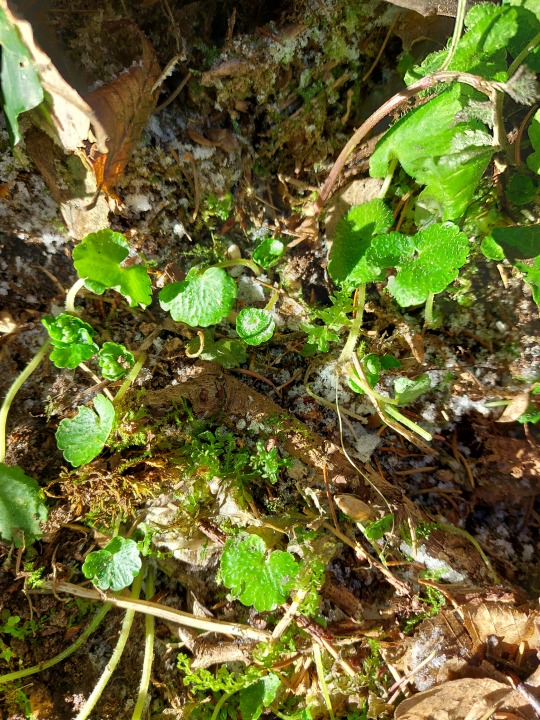
Das Wechselblättrige Milzkraut (Chrysosplenium alternifolium), auch Gold-Milzkraut, Wechselblatt-Milzkraut oder Krätzenblume genannt, ist eine Pflanzenart aus der Familie der Steinbrechgewächse (Saxifragaceae).https://de.wikipedia.org/wiki/Steinbrechgewächse
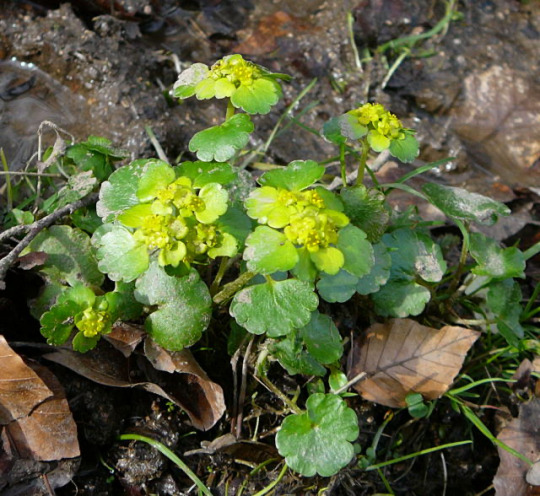
Die Steinbrechgewächse (Saxifragaceae) sind eine Pflanzenfamilie in der Ordnung der Steinbrechartigen (Saxifragales) innerhalb der Bedecktsamigen Pflanzen (Magnoliopsida).https://de.wikipedia.org/wiki/Steinbrechgewächse
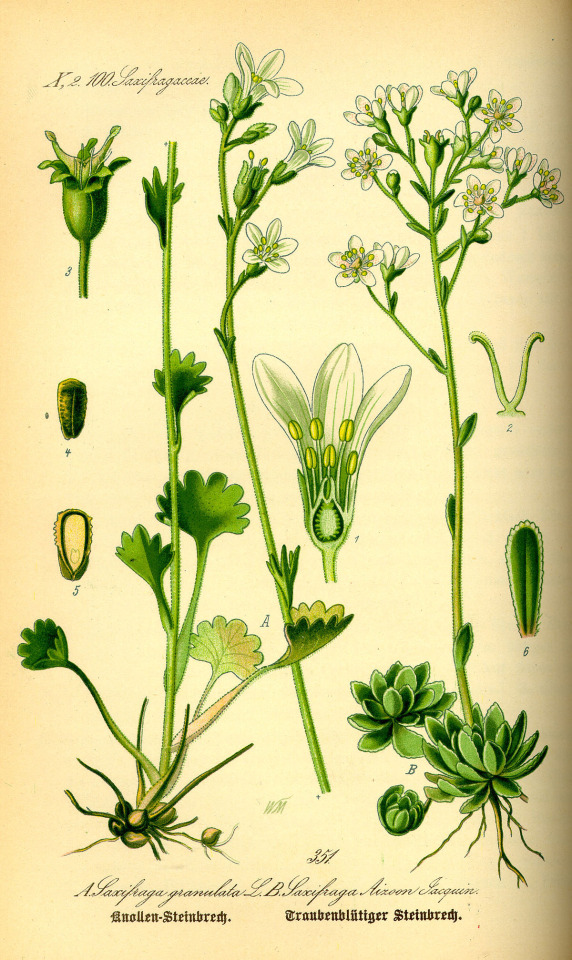
saxifragaceae Arten
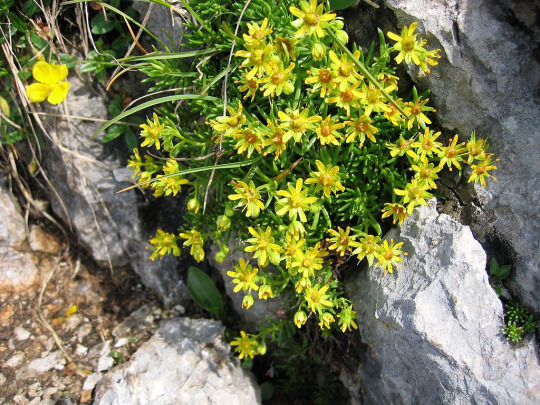

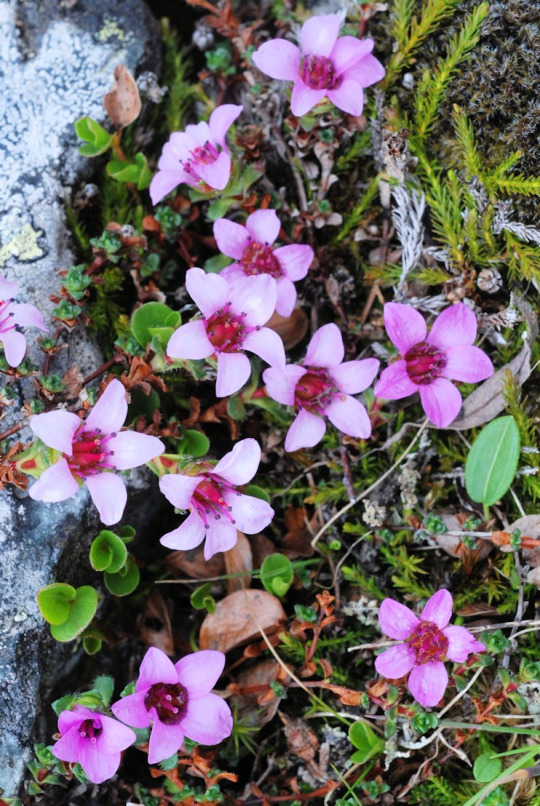
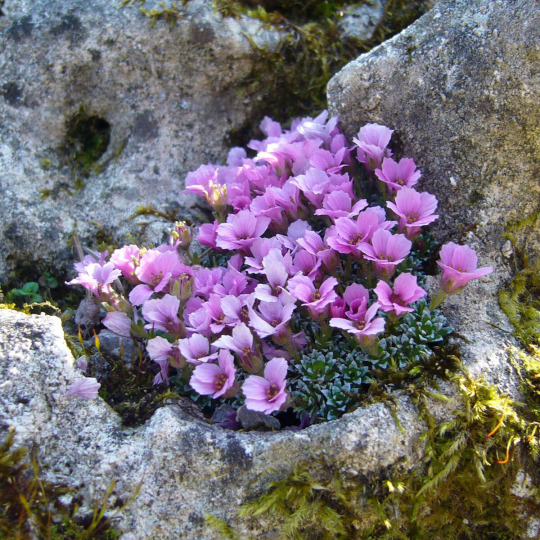
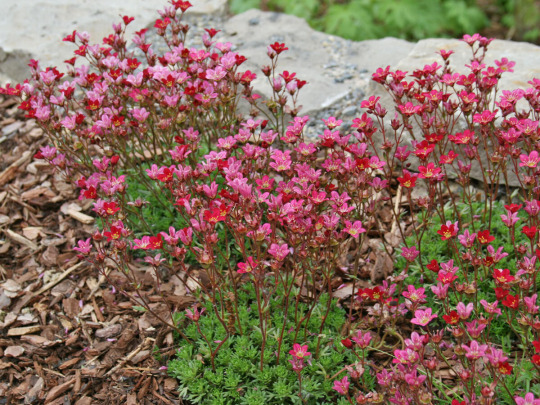
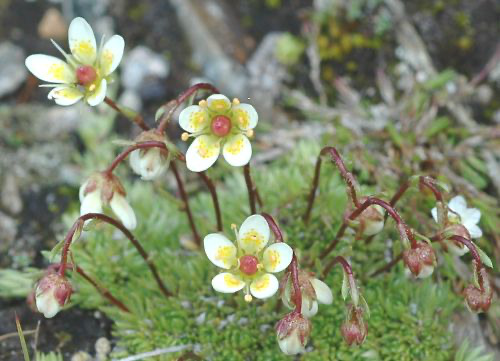

0 notes
Photo

Aeonium arboreum, the tree aeonium, tree houseleek, or Irish rose, is a succulent, subtropical subshrub in the flowering plant family Crassulaceae. It is an invasive weed in places outside its natural distribution, for example as a garden escape throughout temperate southern Australia. Species: A. arboretum Family: Crassulaceae Kingdom: Plantae Order: Saxifragales Genus: Aeonium #allabout📸 (at Jammu and Kashmir) https://www.instagram.com/p/CfKK_PjhMJp/?igshid=NGJjMDIxMWI=
0 notes
Text

Tylecodon cacalioides (c. 1777-1786) - Robert Jacob Gordon
#Wonder Rooms#Cabinet of Curiosities#Public Domain#Robert Jacob Gordon#18th Century#Scientific Illustration#Botany#Plantae#Saxifragales#Crassulaceae#Tylecodon
7 notes
·
View notes
Photo

🌱 Graptopetalum paraguayense E.Walther, también conocida como graptopétalo, Sedum weinbergii, planta madre perla o planta fantasma, es una planta suculenta del género Graptopetalum, nativa de México. #GraptopetalumParaguayens #EWalther #Graptopetalum #Magnoliophyta #Crassulaceae #Saxifragales #Sedumweinbergii #plantamadreperla #plantafantasma #suculenta (en Mendoza, Argentina) https://www.instagram.com/p/CkL8hwiJAuu/?igshid=NGJjMDIxMWI=
#graptopetalumparaguayens#ewalther#graptopetalum#magnoliophyta#crassulaceae#saxifragales#sedumweinbergii#plantamadreperla#plantafantasma#suculenta
0 notes